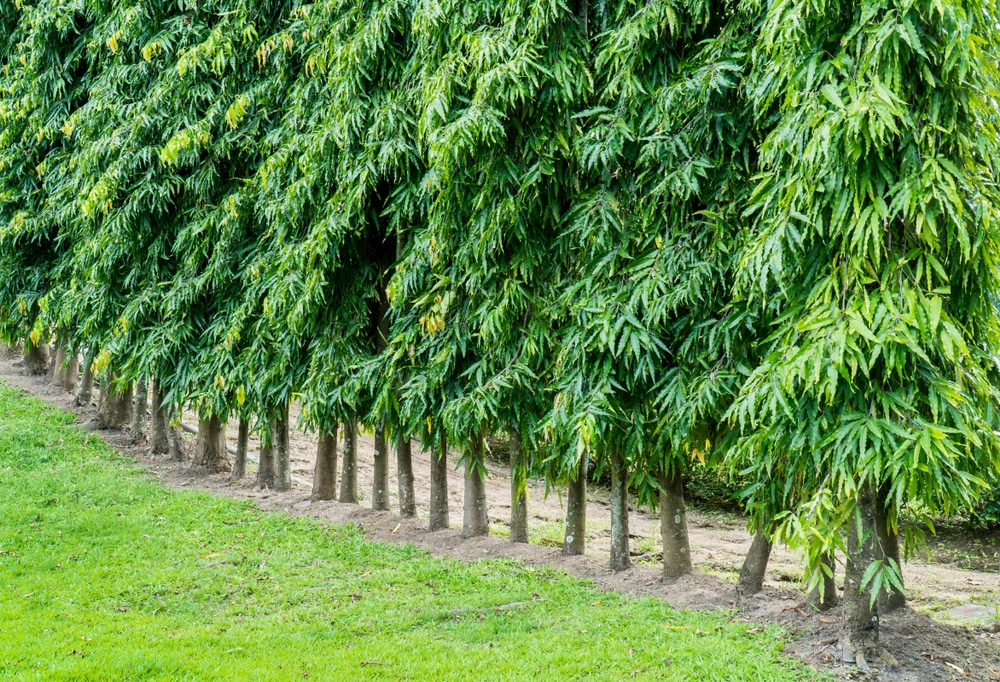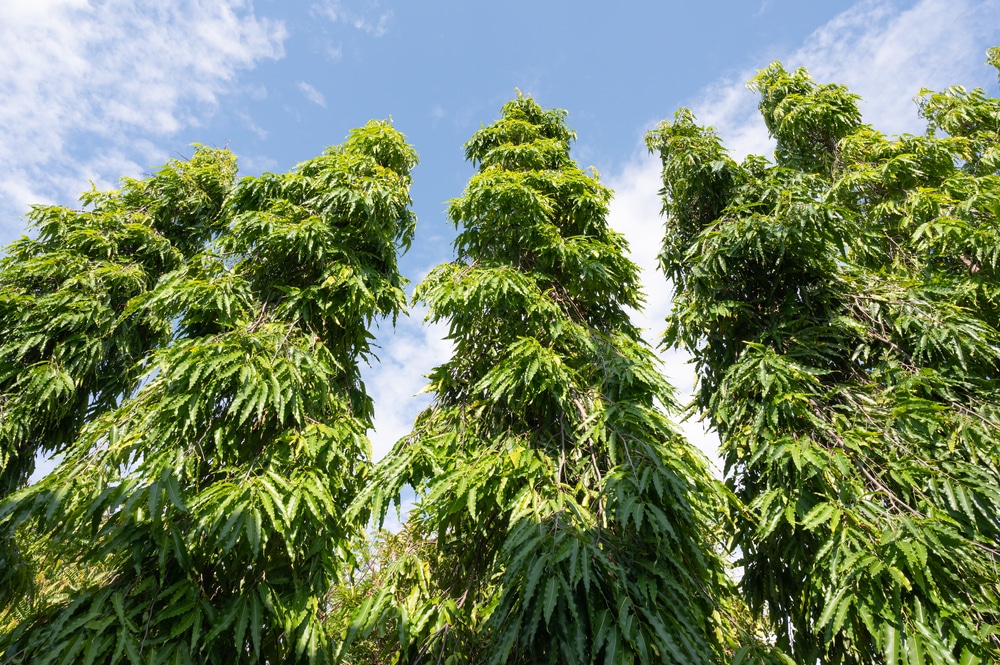The Polyalthia Longifolia, or Mast Tree, is an evergreen native to the tropical and subtropical regions of India and Sri Lanka. It is popular for the beautiful lush green foliage that it bears throughout the year and columnar growth habit. In Florida, this tree does particularly well, as long as you provide it with adequate care and maintenance. Let’s look at how to grow and care for a mast tree in Florida.
What is a mast tree?

Mast Tree Florida is a large evergreen tree in the family of Annonaceae. It is native to tropical and subtropical areas of India and grows up to 30 or 60 feet tall, with an upright, spreading form.
The tree is commonly referred to by many other names, including Indian fur, false Ashoka, Indian willow, telegraph pole tree, or weeping polyalthia. In its native India, the tree is called vanamutti.
The trunk has a light brown bark, while the leaves are dark green and glossy. The tree’s younger leaves are a bronze color until they mature. The trees produce greenish-yellow flowers in the spring, which are about one and a half inches in diameter.
In the late summer and fall, the tree will grow small fruits that are green and then turn brown and purple. They are often eaten by birds, bats, and other wildlife. Birds help to spread the seeds, which are at the center of the fruit and from which a new tree can grow.
The trees are also drought-resistant and can withstand heavy winds, making them great for coastal areas in Florida that are likely to be struck by tropical storms.
How to grow a mast tree in Florida
When planting your Mast Tree, choose an area with plenty of sun and well-draining soil. Dig a hole slightly larger than the root ball and fill it back in with soil after you’ve placed the tree in the ground. Make sure to water the tree generously during the first month of its growth period.
You can also grow a tree from seed by planting it in a well drained loamy soil. The seed can take up to six weeks to germinate, so you’ll need to be patient. Mast trees can also be propagated by cuttings and air layering.
How to care for a mast tree in Florida
Here are some tips to help you correctly care for your mast tree in the months and years after planting:
Watering
Give your Mast Tree a good watering once a week during summer months or when the top inch of soil becomes dry.
Fertilizer
To ensure that your Mast Tree gets the nutrients it needs, fertilize every three months with an all-purpose fertilizer. This will also help to promote healthy foliage and blooms.
Pruning
You can prune your tree as needed to remove any dead or unhealthy branches to avoid infection.
Mulch
You can also use mulch or pine needles to moisten the soil and reduce weed growth around the tree.
Pests and diseases
Mast Trees can be susceptible to certain pests and diseases. Check the tree regularly for any signs of infestation or infections, such as spots on leaves or webbing under branches.
If you spot any insects or fungal infections, contact your local plant nursery or garden center for advice on how to treat the issue. There are many insecticides available that can help get rid of infestations.
Conclusion
Your Mast Tree will thrive in Florida’s warm climate with proper care and maintenance. You’ll be able to enjoy its beautiful blooms and lush foliage and keep it healthy by following these simple guidelines.
